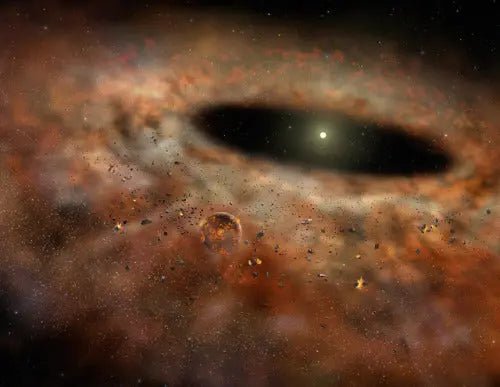The Wonders of Our Solar System: A Journey Through Cosmic Marvels
Our solar system, a cosmic ballet orchestrated by the laws of physics, is a wonderland filled with intriguing phenomena, jaw-dropping dimensions, and celestial bodies that challenge our understanding of the universe. Despite being just one of hundreds of billions of solar systems in the Milky Way galaxy, which in turn is one of at least 100 billion galaxies in the observable universe, our solar system holds unique marvels that make it fascinating to study. Here are some of the most interesting facts about our cosmic neighborhood.
The Sun, Our Cosmic Dynamo
At the center of our solar system resides the Sun, a G-type main-sequence star that's about 4.6 billion years old. While it might look like an unchanging yellow orb from Earth, the Sun is a bustling hub of activity, churning out energy via nuclear fusion. Every second, it converts 600 million tons of hydrogen into helium, releasing an energy equivalent to billions of atomic bombs. Interestingly, the Sun makes up a whopping 99.86% of the total mass of the solar system. Yet, despite its grandeur, it's just an average star among the estimated 100 billion stars in our galaxy.
Planetary Giants and Their Moons
Jupiter and Saturn, the gas giants, defy imagination with their sheer size and number of moons. Jupiter is so large that more than 1,300 Earths could fit inside it. It also boasts the Great Red Spot, a storm larger than Earth that has been raging for at least 400 years. Saturn, known for its stunning ring system, has rings so expansive that they would stretch almost from Earth to the Moon if unrolled. Titan, one of Saturn's moons, has lakes and rivers not of water, but of liquid methane and ethane.
The Earth-Moon Duo
The Earth-Moon system is one-of-a-kind in the solar system. Unlike most other moons, our Moon is quite large relative to Earth, about 1/4th its diameter. This unique size ratio is why we experience tidal locking, a phenomenon where the Moon shows the same face to Earth at all times. The synchronous rotation is not just a stunning spectacle but also influences Earth's tides and stabilizes its axial tilt.
The Puzzling Pluto
Pluto, once considered the ninth planet, is now classified as a "dwarf planet," thanks to its inability to clear its orbit of other debris. But its demotion doesn't make it less intriguing. Pluto has a heart-shaped glacier, named Tombaugh Regio, that's made of nitrogen ice. This distant world also has a thin atmosphere that temporarily expands when it comes closer to the Sun, only to freeze back onto the surface as it moves away.
Asteroid Belt and Kuiper Belt
Between the orbits of Mars and Jupiter lies the Asteroid Belt, a zone filled with rocky remnants from the solar system's formation. Beyond Neptune, the Kuiper Belt hosts icy objects, including Pluto. Interestingly, some astronomers speculate that there might be a ninth planet, often called "Planet Nine," lurking in the outer reaches of the solar system, shepherding the orbits of distant Kuiper Belt objects.
The Voyager Probes
Launched in 1977, the Voyager 1 and 2 probes have provided invaluable data about our solar system and are now venturing into interstellar space. Voyager 1 is the farthest human-made object from Earth, more than 14 billion miles away as of my last update in 2022. These probes carry the Golden Record, a time capsule intended to communicate the story of our world to extraterrestrials.
Cosmic Oddities
Venus, often called Earth's "sister planet" due to its similar size and composition, has a day that's longer than its year. Mercury, the closest planet to the Sun, has ice in permanently shadowed craters. Uranus rotates almost entirely on its side, making its poles experience 42 years of continuous sunlight or darkness.
The wonders of our solar system are not just limited to these highlights. Each discovery only adds more questions to our understanding of the universe, rendering our solar system a perpetual source of awe and curiosity. As technology advances, who knows what other cosmic secrets we'll unveil?


